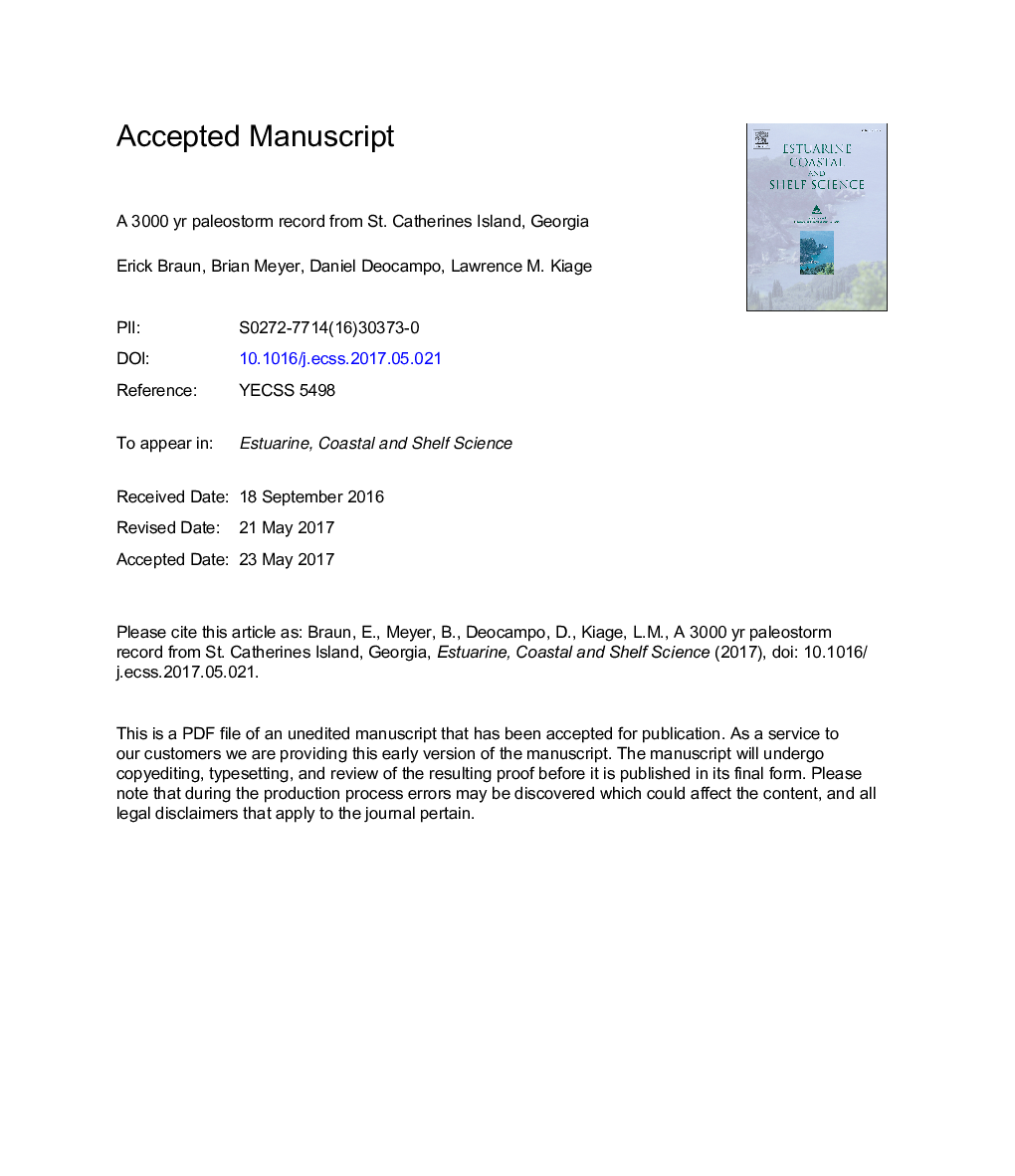| Article ID | Journal | Published Year | Pages | File Type |
|---|---|---|---|---|
| 5765148 | Estuarine, Coastal and Shelf Science | 2017 | 39 Pages |
Abstract
Tropical cyclones (hurricanes in the northern hemisphere) are amongst the most devastating of the world's natural disasters and cause billions of dollars in damage every year. Data on the likelihood of a coastal site being struck by a major hurricane strike can potentially aid in planning and mitigation efforts that could save money and lives. However, forecasting requires data that are currently insufficient for the Georgia Bight. This study provides information to enhance the paleohurricane record by analysis of a 467Â cm thick vibracore raised from St. Catherines Island, GA. Sediment geochemistry and foraminiferal assemblages indicate deposits attributable to seven paleohurricane events, five of which were likely major hurricanes when they made landfall on St. Catherines. Magnitudes were estimated by comparison to the overwash deposit left by “The Sea Islands hurricane of 1893”, a major hurricane recorded by the recent sediment of St. Catherines Island. The St. Catherines record also shows a change in the activity levels on the Georgia coast with two distinct activity regimes over the past 3000 years.
Related Topics
Physical Sciences and Engineering
Earth and Planetary Sciences
Geology
Authors
Erick Braun, Brian Meyer, Daniel Deocampo, Lawrence M. Kiage,
